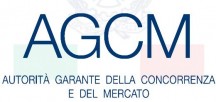The Italian Antitrust Authority (IAA) said that vertically integrated companies, which provide internet access both at wholesale and retail level, should not be allowed to receive public subsidies for the deployment of new generation broadband networks in Italy[1].
This clarification was provided upon request of the Italian Government which, according the recently published Italian Strategy for ultrafast broadband, is prepared to foster the completion of the national broadband network by means of direct subsidies as well as tax relief measures[2].
According to the IAA, in order to be entitled to receive public aid each potential beneficiary should ensure that (i) it is not a vertically integrated company or it will undergo unbundling within six months from adjudication of the public funding pursuant to the tendering procedure and (ii) it does not control any other competitor taking part to the awarding procedure.
In the IAA’s opinion, vertical separation is the proper tool in order to avoid that public money may be inadmissibly diverted from infrastructure deployment and used by a vertically integrated company for the cross-subsidisation of retail activities to the detriment of fair competition in the downstream markets.
In a previous joint survey with the Italian Regulatory Authority[3], the IAA considered three scenarios as far as the deployment and management of broadband networks are concerned:
(i) in the first scenario, the development and management of the FTTB/H network are entrusted to a network operator complying with the vertical unbundling requirement;
(ii) in a second scenario, the FTTB/H network is developed and managed by a vertical integrated incumbent operator;
(iii) in a third solution, it is a joint-venture with no controlling stakeholder that ensures the deployment and management of the network.
According to the IAA, the best scenario is undoubtedly the first one since vertical unbundling removes any incentives by the network operator to enter into discriminatory conducts against competitors in the downstream markets, thus fostering competition in the supply of services to the end users. On the other hand, the “second best” solution is the one based on the creation of some forms of partnerships and joint-ventures ensuring co-investments by a plurality of stakeholders.
In any case, the IAA confirmed to the Government that it is of the utmost importance that the network operators, which will receive public funding upon the forthcoming tender procedures, provide access to the network on non discriminatory basis according to the principles laid down by the European Commission in the EU Guidelines for the application of State aid rules in relation to the rapid deployment of broadband networks[4].
_________________________________________
[1] AS1180 Strategia Italiana per la banda ultralarga, in IAA Bull. No 10 of 30 March 2015, 117-119
[2] Italian Council of Ministers Presidency, Strategia Italiana per la banda ultralarga, 6-11 March 2015



